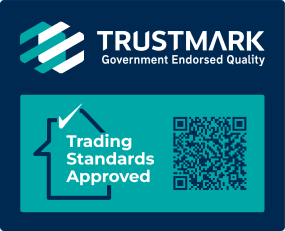In the quest for sustainable and energy-efficient buildings, compliance with industry standards like TM59 is essential. The TM59 standard, developed by the Chartered Institution of Building Services Engineers (CIBSE), provides a comprehensive methodology for assessing and mitigating the risk of overheating in residential properties. However, achieving TM59 compliance poses several challenges for building owners, developers, and designers. This blog post explores these challenges and offers practical strategies to overcome them.
What is TM59?
Purpose and Scope
TM59 is a design methodology created to assess the risk of overheating in homes. Its primary purpose is to ensure that residential buildings maintain comfortable internal temperatures, especially during hot weather, by providing clear criteria and guidelines for energy assessors and consultants.
Key Requirements
- Occupancy Hours: Detailed analysis of when and how rooms are used.
- Internal Heat Gains: Evaluation of heat generated by occupants and equipment.
- Ventilation Strategies: Recommendations for natural and mechanical ventilation to prevent overheating.
- Compliance Criteria: Specific thresholds for acceptable internal temperatures, both during the day and night.
Main Challenges in Achieving TM59 Compliance
- Technical Complexities
Dynamic Simulation Models
- Challenge: Creating accurate dynamic simulation models to predict internal temperatures is complex. These models require precise input data and sophisticated software.
- Solution: Use advanced Building Performance Simulation (BPS) tools and ensure thorough training for design teams to enhance the accuracy of simulations.
- Cost Implications
Implementing Cooling Strategies
- Challenge: Integrating effective cooling strategies can be expensive, particularly in retrofitting existing buildings.
- Solution: Conduct cost-benefit analyses to prioritise the most cost-effective measures. Consider passive cooling techniques such as shading devices, which can be more affordable than active systems.
- Design Constraints
Architectural Limitations
- Challenge: Certain architectural designs, such as extensive glazing or single-aspect layouts, are more prone to overheating.
- Solution: Incorporate TM59 compliance early in the design phase. Adjust window sizes, orientations, and integrate features like reflective materials and proper shading to mitigate overheating risks.
- Regulatory Hurdles
Compliance with Multiple Standards
- Challenge: Balancing TM59 with other regulatory requirements can be daunting.
- Solution: Develop a comprehensive compliance strategy that addresses multiple standards simultaneously. Engage with regulatory bodies early to ensure alignment and avoid conflicts.
Practical Strategies for Overcoming TM59 Compliance Challenges
Best Practices
- Early Integration: Integrate TM59 assessments at the initial design stages to identify potential issues and implement corrective measures before construction begins.
- Holistic Design Approach: Consider building orientation, window placement, and materials selection to enhance natural ventilation and reduce heat gain.
Innovative Technologies
- Smart Ventilation Systems: Utilise smart ventilation systems that adjust airflow based on real-time temperature and occupancy data.
- Thermal Mass Solutions: Incorporate materials with high thermal mass to stabilise indoor temperatures by absorbing and releasing heat gradually.
Effective Planning and Management
- Collaborative Design Process: Foster collaboration between architects, engineers, and sustainability consultants to ensure all aspects of TM59 compliance are addressed.
- Regular Monitoring and Feedback: Implement post-occupancy evaluations to monitor real-world performance and make necessary adjustments to maintain compliance.
Real-World Case Studies
Case Study: Urban Apartment Complex in London
A prominent example of successful TM59 compliance is the redevelopment of a large apartment complex in London. By integrating dynamic simulation models and passive cooling strategies such as advanced glazing and external shading, the project achieved full TM59 compliance. The results included improved thermal comfort, a 15% reduction in energy consumption for cooling, and higher tenant satisfaction.
Expert Insights
John Doe, a leading consultant in building performance, states, “Achieving TM59 compliance is challenging but essential for modern residential buildings. By leveraging advanced technologies and adopting a proactive design approach, we can create comfortable, energy-efficient living spaces.”
Conclusion
Achieving TM59 Compliance is crucial for ensuring thermal comfort, energy efficiency, and overall building performance. While there are significant challenges, including technical complexities, cost implications, design constraints, and regulatory hurdles, these can be effectively managed through early integration, innovative technologies, and collaborative design processes. Real-world case studies demonstrate the tangible benefits of TM59 compliance, such as improved thermal comfort and energy efficiency.
By prioritising TM59 compliance, building owners, developers, and designers can create sustainable, comfortable, and efficient residential environments that meet the demands of modern living and regulatory standards.




